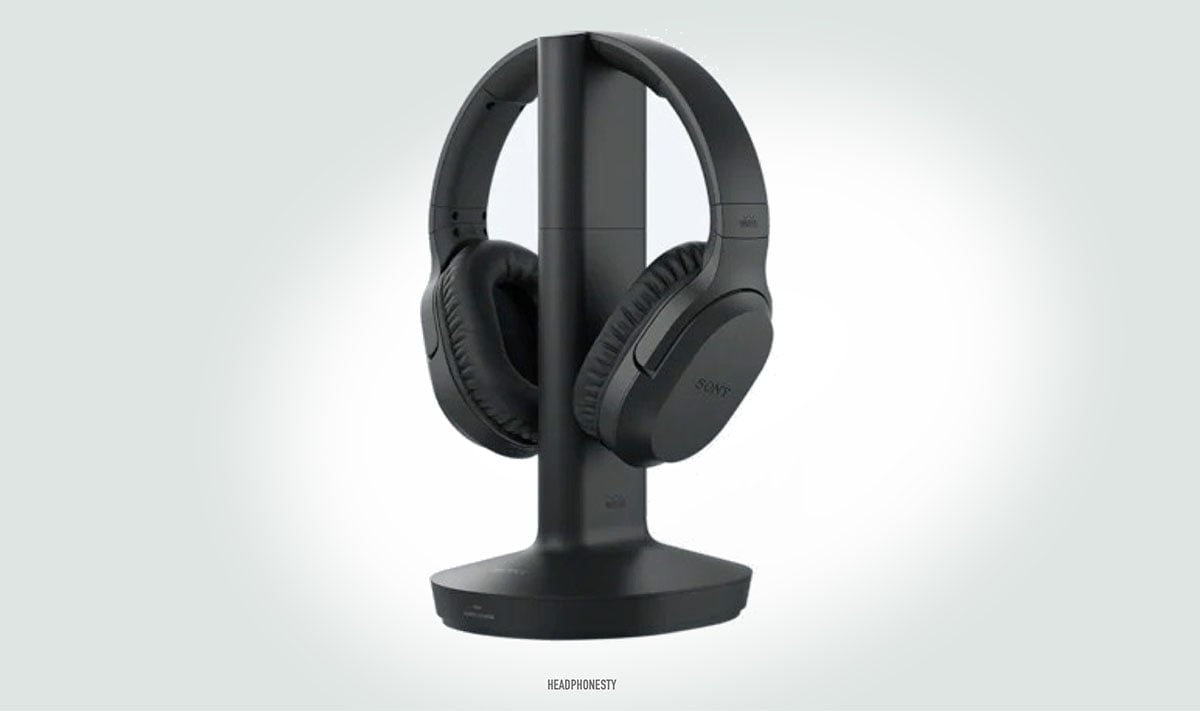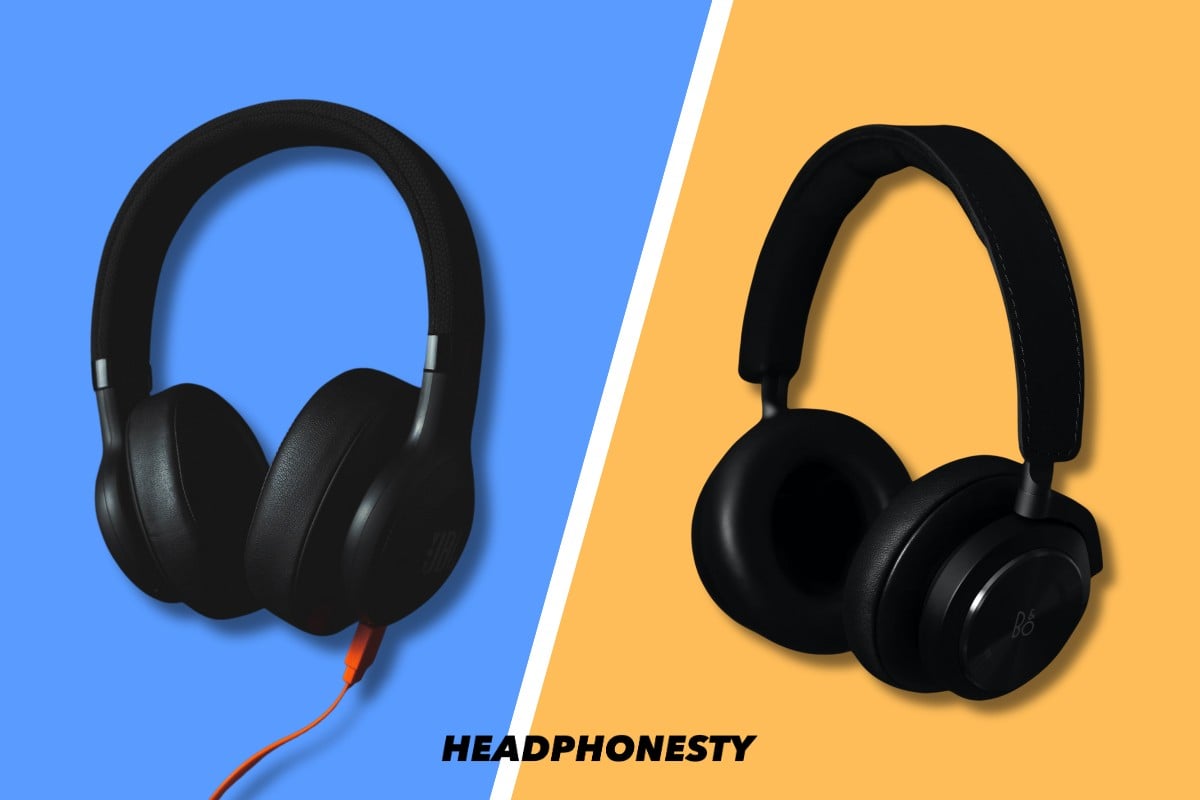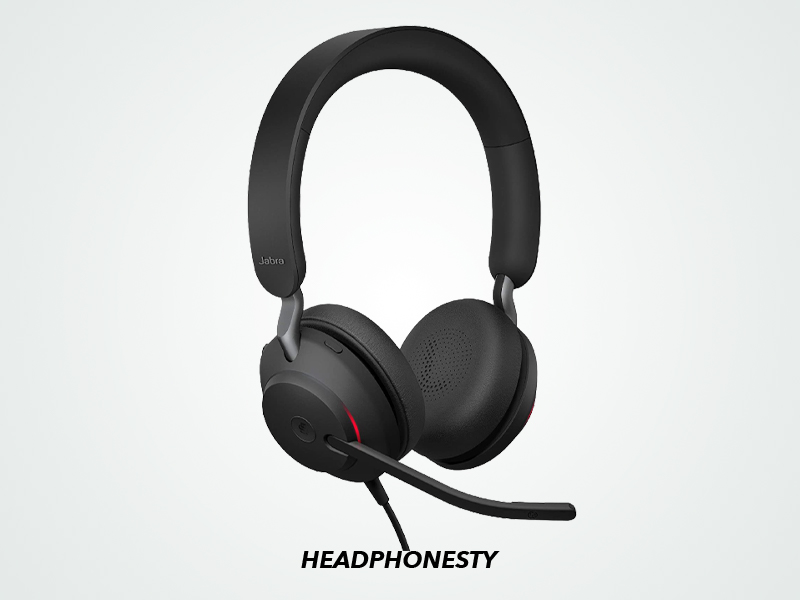Check out the differences between wired vs. wireless headphones to see which one best fits your lifestyle, preferences, and needs.
The choice between wired and wireless headphones usually seems to come down to a preference for mobility.
However, that’s not all there is to it. There are a few more things to think about, since the sound quality, playtime, and other features can be affected by whether the headphones are wired or wireless.
Keep reading as we detail the advantages and disadvantages of wired and wireless headphones to help you decide the best fit for your lifestyle.
The Case for Wired Headphones
Wired headphones make use of headphone jacks and plugs to transmit sound from an audio source, like a phone or laptop, to the headphones’ speakers.
If you’re getting lost here, don’t worry; this is just a little technical overview before we get into the pros and cons of wired headphones below.
Advantages of wired headphones
There are many reasons why people still prefer good ol’ wired headphones. We’ll be going over some of them below.
Better sound quality
Wireless headphones have greatly improved over the years. But wired headphones offer the greatest potential for achieving the best possible sound quality.
To provide great sound, wired headphones use physically propagated analog signals which can transmit more data than wireless audio signals. Audio compression is avoided, and audio signals are delivered from their source in full resolution.
We’ll come back around to this later, when we go over some of the imposed limitations of wireless audio compression.
Costs less and easy to repair
Simply put, wired headphones are frequently easier to repair than wireless pairs. Be it frayed headphone wires or damaged/shorted wires, there’s often a simple fix. Replacement parts for wired headphones are also generally more affordable and readily available than the components in wireless headphones.
Unlimited playtime
Wired headphones usually don’t need an external power source, as audio signals themselves produce enough power to drive the headphones. Thus, there’s no need for chargers or batteries.
As long as your wired headphones are plugged into your audio source, you’re good to go!
Well, that’s almost true. There are a few select exceptions: wired active noise-canceling headphones need a continued source of power to neutralize ambient noise. Hence, albeit wired, they still need a secondary power source, such as batteries or a USB cable.
A second example, though niche, are certain pairs of electrostatic headphones that require external voltage. But if you’re reading this article, you’re probably just getting started in the headphone hobby and don’t have to worry about electrostatics for now.
It’s also important to mention that while wired headphones can be driven solely by audio signals, headphones with high impedances and/or low sensitivities may require an amplifier.
Easy to use
Wired headphones have a plug-and-play setup. Simply plug them into a compatible device, and you can play your audio immediately.
By going wired, you don’t run the risk of any unwelcome wireless interference or pairing issues. In this regard, wired headphones are more user-friendly than wireless ones.
Disadvantages of wired headphones
For all of the advantages that wired headphones provide, there are still some considerable downsides. Below are some of their disadvantages.
Can restrict movement
There’s no denying that wires can restrict a listener’s range of motion. Listeners are bound to limit their movements to avoid accidentally tugging on the wires. In short, wires tie a listener to their audio source.
Cables can be fragile
Headphone cables are often thin and frail. Intentionally or accidentally tugging on them can damage their internal wiring. When wires get damaged, it can result in your headphones only playing in one ear, static sounds, and other issues.
Don’t worry, though! There are some headphone repair hacks that you can try to solve this.
Compatibility
The 3.5 mm headphone jack has been the universal standard for most modern audio devices for years. While most laptops and desktops still feature the classic analog jack, smartphone manufacturers have been gradually phasing it out as more and more everyday listeners go wireless.
If you’re a stubborn wired headphones stalwart, there are some extra steps you’ll have to take if you want to listen to music from your phone.
The DAC option
Your first option is to get yourself a Digital to Analog Converter (DAC) that is compatible with your phone’s USB port.
DACs receive the digital audio signal from your audio device via USB, then convert it to an analog signal that can be transmitted through headphone wires. This signal is output through an analog headphone jack on the DAC – 3.5 mm or otherwise.
DACs can range in price and quality from $6 portable ‘dongles’ with basic utilitarian functionality, to $5,000 desktop units with advanced signal processing capabilities.
DACs can, in fact, serve to further enhance the sound quality that wired listener’s are often pursuing. But it’s an extra hurdle that negates some of the simple “plug-in-and-play” appeal that we covered in the last section.
The USB cable option
Your second option is choosing wired headphones that use a USB cable to connect to an audio device. This replaces the need for a conventional analog headphone cable. However, this solution still comes with limitations.
For one, this does not apply to wired headphones with non detachable cables, for obvious reasons. Secondly, many (though not all) USB headphone cables contain cheap onboard DACs that are not made to provide the great sound quality a wired listener may be pursuing.
All in all, while it’s not terribly daunting to iron out compatibility issues with wired headphones, the days of easy, wired simplicity seem to be passing behind us. Wired headphones are now arguably a little more fussy to deal with on modern phones built for wireless listeners.
The Case for Wireless Headphones

Wireless headphones use radio transmission technology to transfer audio data from the source to your ears.
The audio data transmission in headphones is commonly processed through three technologies:
- Bluetooth
- Radio Frequency (RF)
- Infrared Frequency (IF)
But, Bluetooth is by far the most common type of transmission when it comes to wireless headphones, so it will be our focus for the remainder of this article.
Advantages of wireless headphones
Below are some reasons why you might want to opt for wireless headphones.
- Freedom of movement
- Active Noise Cancellation (ANC)
- Compatible with more modern devices
- More portable
- No more wires
Freedom of movement
Wireless headphones offer a wide range of movement. With them, you are free to move without having to worry about accidentally yanking a cable. This can also solve the inconvenience of having to carry an audio source with you all the time.
Some wireless headphones even offer up to 100 feet of distance between your audio source and listening position.
Active Noise Cancellation (ANC)
Not all wireless headphones feature ANC, and not all headphones that feature ANC are wireless. However, the two technologies have become increasingly intertwined. As wireless headphones have found favor among commuters for the mobility they afford, ANC features complete the package by canceling out the thunderous drone of trains, planes, and buses.
Though this article is primarily focused on wireless features, ANC is an alluring feature all on its own! Plenty of listeners go wireless just for the sheer luxury of Active Noise Cancellation.
Compatible with more modern devices
As mentioned earlier, more and more smartphone manufacturers are forgoing the common 3.5mm headphone jack. While wired headphones require an extra external DAC for smartphone compatibility, wireless headphones can simply connect over your phone’s Bluetooth.
After you pair your wireless headphones with your device for the first time, future connections will (ideally) be fast and fluid. The “plug-in-and-play” convenience of wired headphones is now rapidly ceding ground to the “turn-on-and-play” convenience of wireless headphones.
More portable
Wireless headphones’ compact design makes them a great option for active people. Since wireless headphones don’t have extra wires and components, they’re frequently more portable and lightweight.
Most wireless headphones are also foldable and/or flexible, making them easy to pack with your luggage or take with you on simple day-to-day commutes.
No more wires
Going wireless also results in eliminating issues with annoying, tangled wires. You won’t have to deal with knotty cable messes again (at least for your headphones). And you also won’t need to buy cable replacements in case your fragile headphone wires break.
Disadvantages of wireless headphones
Wireless headphones have come a long way since their inception. However, there are still certain aspects to them that come with drawbacks. Below are some of the downsides of wireless headphones.
- Requires charging
- Audio compression via wireless codecs
- Repair is harder if not impossible
- Connectivity and interference Issues
Requires charging
Have you ever taken out your phone during a long train ride only to find out that it’s running low on battery? That could also be the case for wireless headphones.
Wireless headphones require repeated charging. This can be cumbersome especially when traveling for long periods of time. Plus, not only do wireless headphones drain their own battery, but they also drain the audio device’s battery. Talk about a double whammy!
Fortunately, battery life has come a long way since the initial emergence of wireless headphones. Sennheiser’s Momentum 4, for example, can support 60 hours of playback on a single, full charge. The Lypertek Tevi can support 10-hours of playback on the earbuds themselves, and 60 hours of battery life in the headphone/charging case.
However, some popular models, like Apple’s AirPods Max, support a modest 20 hours. So while wireless headphone battery life is improving, it may be cause for consideration depending on which models you’re leaning towards
Audio compression via wireless codecs
Alright, let’s finally get into it: what is this audio compression thing we keep mentioning? In short, Bluetooth technology isn’t quite able to transfer information as efficiently as a tried and true wired connection – yet.
For the following example, let’s think of the resolution of a streamed audio file in terms of its bitrate, measured in kilobits per second (kbps).
Now, take a HiFi streaming service such as Tidal, which can play audio up to 1411 kbps. If you listen to a Tidal stream with a pair of wired headphones, it’s a near guarantee that every last kilobit of resolution is expressed through the analog signal.
Start listening to Tidal with a pair of AirPods, however, and the 1411 kbps suddenly becomes compressed to a mere 300 kbps. Why is this?
Audio codecs
An audio codec is the means by which a Bluetooth signal carries information from a transmitting audio device to a receiving audio output, such as headphones.
AAC and SBC codecs are incapable of carrying the full information load of a HiFi stream from Tidal. Instead, they choose the “important” bits of audio information, and fold them into easily transferable packages. These are then unfolded by a sound card in the headphones. Through this process, the finer bits of audio information are lost.
If that still doesn’t make sense, let’s go with a food analogy: a wired headphone is giving you a fresh farm-to-table experience, while a wireless audio signal is giving you the convenience of a frozen pizza – even if it’s a really tasty frozen pizza.
Yet, audio codecs have seen extremely significant improvements over the past few years. Take Sony’s LDAC codec, for example, which can transmit HiFi 32 bit/96khz audio at a bitrate of 990 kbps.
Repair is harder if not impossible
In the case of wired headphones, you can easily repair damaged or frayed wires. Wireless headphones, however, are significantly more difficult to fix. If it is the software that has malfunctioned, the average joe cannot repair it by himself. So, in the case of wired vs. wireless headphones, wired headphones clearly win in regards to repairability.
Connectivity and interference Issues
Interferences may occur when there are many wireless devices in a small area. This is especially true when the wireless transmissions operate within a common bandwidth. Examples of devices that can cause such interference include Wi-Fi routers, microwaves, radios, or simply other people’s Bluetooth devices. Interferences can adversely affect the audio quality, cause audio delays/lags, or audio dropouts.
Other times, these issues can result from mismatched codecs or Bluetooth versions. New headphones that are optimized to use the LDAC codec on Bluetooth 5.3 might be finicky if you try to pair them with an old phone limited to SBC and Bluetooth 5.0 – or might not connect at all.
Wired vs. Wireless Headphones: Which One’s for You?
There’s no surefire answer to this. The ideal choice still highly depends on your lifestyle and the activities you’ll most likely use your headphones for. Different lifestyles demand different features.
Below is a list of those who most likely need a specific type of headphones for more comfortable use.
Who are wired headphones for?
- Musicians and audiophiles: Wired headphones often deliver better audio quality than wireless ones. That’s why, wired headphones are the best option for audiophiles who value hearing music in the way that it ‘ought’ to be heard and musicians who need to listen to every detail.
- Gamers who can’t afford to experience latency: Precision is vital for hardcore gamers as any sound delay can compromise their position or result in a loss. Unfortunately, even the best Bluetooth headphones risk interference, making wired ones more reliable against latency issues.
- People who prefer plug-and-play: For those who like straightforward technology, wired headphones are their best bets. They’re particularly well suited for people who find wireless pairings and interference a hassle.
Who are wireless headphones for?
- Athletes or people with active lifestyles: Wireless headphones, particularly true wireless earbuds, are ideal for those with active lifestyles, offering freedom of movement and a lightweight design. Industrial workers also benefit from them since they eliminate the possibility of the wires getting caught in other equipment.
- Frequent Travelers: Lightweight and compact, the wireless headphones’ portability is a huge plus for travelers. Many wireless models also effectively mute the noise of planes and trains with Active Noise Cancellation (ANC).
- Office Workers: If you work in an office, you likely don’t need a high-end pair of wired headphones for intensive HiFi listening. Instead, you’d prefer convenient headphones that allow seamless movement from your desk to the water cooler.


Did ya know there are headphones that are Bluetooth and wired boom best solution you just have both in one and can use whatever you like whenever you like 👍
I am 95 yeas old with hearing impairment. Extremely useful article. I prefer wired headphones for talking on phones. with wireless (BLUTOOTH) headphones the sound volume in not high and also not clear. As I am not active due to age wired devices prefereable. I wish that technology improves to augumemt the volume so that hearing impaired even if not using hearing aids can talk comforably
Yes, and if you want to use your headphones like hearing aids, the latency of the wireless, produces a serious and awful trouble.
also wired act as a fm radio arial too. bonus on some phones with fm radio
Been using wired headphones and earphones since the start (1980s) with walkmans. Later only been using phones with 3.5mm socket. From Sony to HTC to LG and finally Sony Xperia. I’m not going to restrict myself to lower quality wireless audio on Apple and Samsung where the lower quality costs more.
an article that says nothing
a person who cant read
Does prolonged Bluetooth use in wireless headphones have health implications?